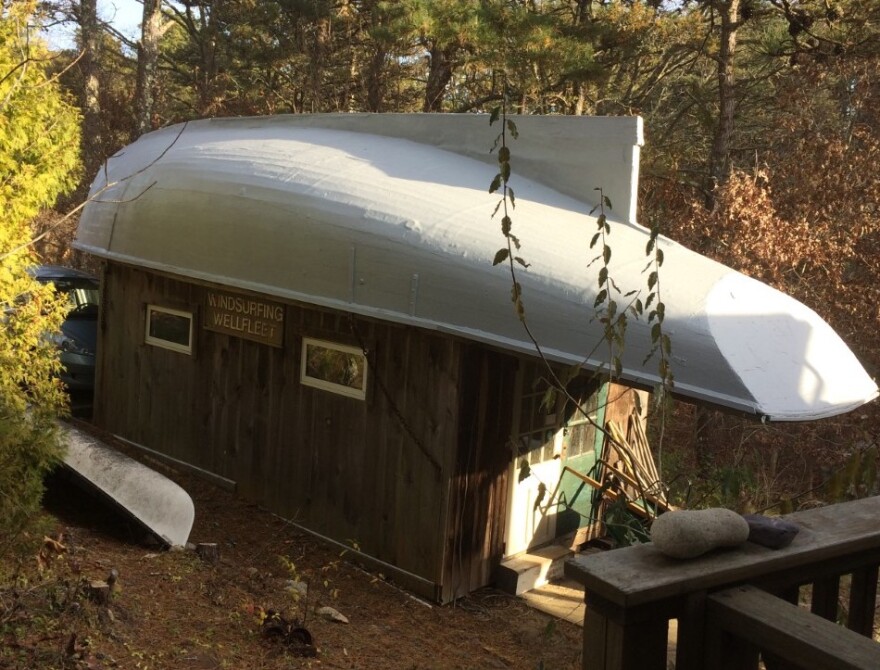Our house was built largely from recycled materials. It was built in the late 1980s by Phillipe Villard, a multi-talented artist who was born in France and came to this country in his thirties. After he had laid the foundation, he would sit on the deck and look through binoculars at the road leading up to the dump. When he saw a truck carrying something he could use — studs, pieces of plywood, old windows, doors, bricks, etc. — he would bicycle over to the dump and say to the driver, “You know, I could use that. Could you possibly drop it off at my house?”
Since it would save him a demolition fee, the truck driver would usually agree. Word got around and eventually contractors would stop at Phillipe’s before going to the dump to see if there was anything he could use.
After we bought the house from Phillipe and his wife, Kim, in 1995, we discovered it was full of examples of recycling, many of which were salvaged when Kim and Phillipe did renovation work on older houses. Our bathroom door, for instance, came from the historic 18th century Shebnah Rich house in Truro. Perhaps the most exotic example of salvaging were several large sheets of canvas sails that they used as drop cloths and to cover stacks of firewood outside. These came, we later learned, from the U.S.S. Constitution in Charlestown, where Kim, an experienced sail maker, was hired to help replace the old riggings and sails.
Their passion for recycling proved contagious, and over the years we have carried on the tradition. In the days when you could still leave large reusable items outside of the Swap Shop, we appropriated a four-poster maple bedstead, several windows, and the doors to our studies. When the town resurfaced the County Road at the bottom of our hill where it crossed the abandoned railroad bed, it unearthed several dozen oak railroad ties, which I carted up to our yard and used to build bulkheads. When the town library switched from card catalogs to digital, I obtained several of the old birch filing cabinets whose drawers were the perfect size for my extensive library of audio tapes.

I could go on, but the most unusual and still ongoing example of recycling is what I call my boat shed. It concerns a 1929 35-foot schooner originally called the Sea Dawn. The story is that it took part in the evacuation of Allied troops at Dunkirk in 1940, after which its name was changed to Wooden World II. The boat was eventually acquired by Wellfleet builder Yon Potter, who lived aboard it with his family one summer in the early 1990s. When the boat proved unseaworthy, Yon sold it for parts to Kim and Phillip, who were building their own sailboat. Once the hull was completely stripped, they turned it upside-down and set it on posts to use as a carport. After we acquired the property, I decided to convert the carport into a workshop, which I did, using more doors and windows from the swap shop, and spruce flooring left over from a job a contractor friend offered me.
That was nearly thirty years ago. This year, when the original asphalt shingling was beginning to leak, I contracted with a local roofer and his crew to put sheets of rubber roofing and silicon paint on the boat hull. They did a fine job, and I realized the boat now looks very much like a gray humpback whale. This latest incarnation seems to call for yet another new name — perhaps Moby Dick?







